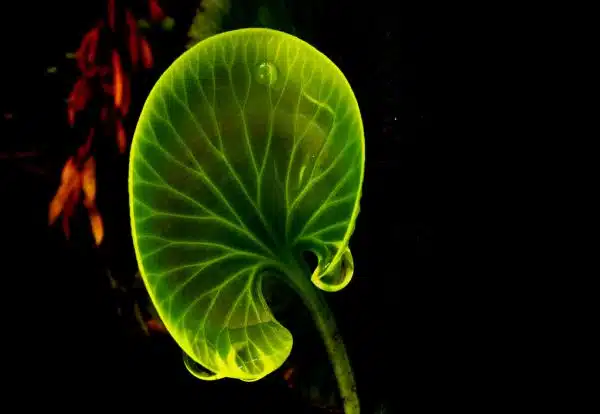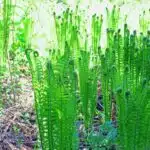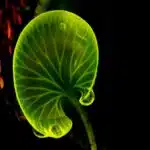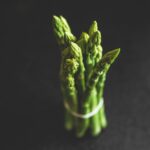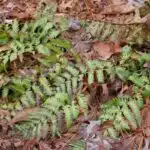Christmas ferns are a popular choice for gardeners and horticulturalists, thanks to their hardy nature and beautiful foliage. These plants are native to North America, and they thrive in a wide range of conditions, making them an ideal choice for those looking to add some greenery to their outdoor spaces. For those interested in growing Christmas ferns, it is important to understand the plant’s specific needs when it comes to soil, light, water, and care.
Growing Christmas ferns can be a rewarding experience for gardeners of all levels. Not only do these plants add visual interest and texture to any garden or landscape design, but they also provide numerous benefits to the environment. From improving air quality to providing habitat for wildlife, Christmas ferns are an excellent addition to any eco-conscious gardener’s collection. In this article, we’ll explore the ins and outs of growing and caring for Christmas ferns so that you can enjoy these beautiful plants year-round.
Understanding The Christmas Fern: An Overview
The Christmas fern, also known as Polystichum acrostichoides, is a hardy evergreen fern that can be found in the eastern United States. It is named after its ability to withstand harsh winter conditions and remain green during the holiday season. This fern has a unique habitat preference and anatomy that make it an ideal addition to any garden.
The Christmas fern is typically found in moist, shaded areas such as forests or along streams. It prefers well-drained soils with a slightly acidic pH level. The fern is native to North America and can be found from Canada down to Florida.
The anatomy of the Christmas fern includes long fronds that grow up to 3 feet tall and are made up of numerous small leaflets. The leaflets have a glossy, dark green color with a slight curve towards the stem. These characteristics make the Christmas fern not only visually appealing but also easy to identify in any garden setting.
Choosing The Right Location For Your Christmas Ferns
Understanding the Christmas Fern: An Overview has provided a glimpse of this beautiful fern’s characteristics and benefits. Now let us delve into Choosing the Right Location for Your Christmas Ferns. One must consider whether to grow them indoor or outdoor, and how much sunlight they need.
Christmas ferns are highly adaptable, making them suitable for both indoor and outdoor growth. However, their preferences differ when it comes to sunlight exposure. If grown indoors, they prefer bright indirect light rather than direct sunlight. In contrast, if grown outdoors, they can tolerate full sun exposure but thrive in partial shade.
When choosing a location for your Christmas ferns, consider the amount of light available in that area. For outdoor planting, choose a spot that receives partial shade during the day to protect them from too much direct sunlight. For indoor planting, place them near a window that provides ample bright indirect light throughout the day. By selecting an appropriate location based on their sunlight preferences, you will ensure optimal growth and healthy foliage for your Christmas ferns.
Next up is soil requirements for optimal growth. Understanding these requirements will ensure your Christmas fern thrives in its new environment.
Soil Requirements For Optimal Growth
Soil preparation is essential for growing Christmas ferns as it directly affects the plant’s health and productivity. The perfect soil composition for optimal growth of Christmas ferns should be well-drained and moisture-retentive, rich in organic matter and slightly acidic. A pH level of 5.0 to 6.5 is ideal for this type of fern.
Soil testing is crucial before planting Christmas ferns as it will reveal the nutrients lacking in the soil and help address any deficiencies. Testing also helps determine the pH level of the soil, which is vital for healthy plant growth. After testing, amend the soil with organic matter such as compost or aged manure to improve soil structure and add nutrients.
When preparing your soil, remove any debris or weeds that may impede plant growth. Ensure that you have adequate drainage by creating a slight slope or adding coarse sand to the soil mix. Properly prepared soil will provide an excellent foundation for healthy growth and development of your Christmas ferns, ensuring long-term success in your garden.
To ensure optimal growth and maintain healthy Christmas ferns, proper watering techniques are essential. Watering your plants correctly means providing enough moisture without overwatering them, which can lead to rotting roots and other issues. In addition to ensuring adequate moisture levels, it is important to consider factors such as humidity levels, temperature fluctuations, and seasonal changes when watering your Christmas ferns. In the next section, we will explore some tips and tricks on how to water these beautiful plants effectively.
Watering Your Christmas Ferns: Tips And Tricks
Watering your Christmas fern is an essential aspect of its care, and it’s crucial to understand how to balance your plant’s watering frequency and soil moisture needs. While the fern requires moderate watering throughout the growing season, you should be careful not to overwater it. Overwatering can lead to root rot and other diseases, which could ultimately kill the plant.
One of the best ways to ensure that you’re watering your Christmas fern correctly is by using rainwater or distilled water. These options are ideal because they don’t contain any chemicals or minerals that could harm the plant. Additionally, they help maintain soil acidity levels, which is vital for healthy fern growth. You can collect rainwater in a barrel or container and use it to water your plants as needed.
To achieve optimal soil moisture levels when watering your Christmas ferns, consider the following tips:
- Water your ferns when the top inch of soil feels dry
- Avoid getting water on the fronds (leaves) as this can cause disease
- Use a tray under your container to catch excess water and avoid oversaturation
- Adjust watering frequency based on temperature changes in your environment
In summary, proper watering techniques are critical for growing healthy Christmas ferns. By balancing their moisture needs with appropriate watering frequencies and using rainwater or distilled water, you can keep these beautiful plants thriving throughout the year. Up next: fertilizing tips for optimal results!
Fertilizing Your Christmas Ferns
When fertilizing Christmas ferns, it is important to take into account the type of fertilizer used. A slow release fertilizer, such as a 10-10-10 or a 20-20-20 blend, is ideal. The frequency of fertilization should be adjusted according to the growth of the fern and its stage of development, with slow release fertilizer being applied every 6-8 weeks. The amount of fertilizer used should be kept to the lowest recommended dose, as excessive amounts of fertilizer can damage the ferns. In general, Christmas ferns should be fertilized once in spring and once in late summer.
Fertilizer Type
As a horticulturalist, it is essential to understand the importance of fertilizing Christmas ferns to promote healthy growth and vibrant foliage. One of the most significant decisions to make when it comes to fertilizing your Christmas ferns is choosing between organic or synthetic fertilizer. Organic fertilizers are derived from natural sources and often contain slow-release nutrients that will feed your ferns over an extended period. On the other hand, synthetic fertilizers are typically made from chemical compounds and offer a quick-release of nutrients.
When deciding on the type of fertilizer for your Christmas ferns, you must also consider the timing of application. Applying fertilizer at the wrong time can do more harm than good. It is best to apply fertilizer in early spring, just as new growth begins to emerge. This will allow your ferns to absorb the necessary nutrients they need for healthy development throughout the growing season. Additionally, keep in mind that over-fertilizing can lead to excessive growth and reduce your fern’s overall health.
In conclusion, understanding how to properly fertilize your Christmas ferns is crucial in ensuring their long-term health and vitality. Whether you choose organic or synthetic fertilizer, be sure to apply it at the right time and in appropriate amounts for optimal results. With proper care and attention, your Christmas ferns will thrive for years to come, bringing beauty and joy during the holiday season and beyond.
Frequency
Now that we have covered the importance of choosing the right type of fertilizer and timing for application, it is time to discuss another crucial factor in fertilizing your Christmas ferns: frequency. It is essential to note that while fertilizing your ferns can promote healthy growth, over-fertilizing can be detrimental to their overall health. Therefore, it is important to understand how often you should fertilize your Christmas ferns.
One of the most critical factors to consider when determining how frequently to fertilize your Christmas ferns is their watering frequency. Proper watering is essential for healthy plant growth, as it helps to ensure that nutrients are delivered effectively throughout the plant’s system. Therefore, it is essential to water your Christmas ferns adequately before applying fertilizer as this will help distribute the nutrients evenly throughout the soil.
Another factor to consider when determining how often to fertilize your Christmas ferns is their sunlight requirements. As with most plants, Christmas ferns require a certain amount of sunlight each day for optimal growth and development. Proper sunlight exposure can also affect nutrient absorption rates and overall plant health. Therefore, it is essential to ensure that your ferns receive enough sunlight before applying fertilizer as this will help facilitate nutrient uptake and enhance their overall growth potential.
In summary, understanding how often to fertilize your Christmas ferns requires careful consideration of several factors such as watering frequency and sunlight requirements. Over-fertilizing can be detrimental to their overall health; therefore, it is crucial to maintain a balanced approach when applying fertilizer. By following these guidelines and providing proper care and attention, you can ensure that your Christmas ferns thrive for years to come.
Amount
As a horticulturalist or garden expert, it is important to consider the amount of fertilizer to use when fertilizing your Christmas ferns. While applying too little fertilizer may not provide your plants with the necessary nutrients, applying too much can lead to over-fertilization and potential damage to your ferns. The amount of fertilizer needed depends on factors such as the size of your ferns and their pruning frequency.
Pruning frequency plays a significant role in determining how much fertilizer to apply. If you prune your Christmas ferns regularly, they will require less fertilizer than those that are left unpruned. Pruning removes dead fronds and encourages new growth, which reduces the plant’s nutrient requirements for optimal health. Therefore, if you prune your ferns frequently, you can reduce the amount of fertilizer needed.
Light requirements are another factor to consider when deciding on the amount of fertilizer to use. While Christmas ferns can tolerate low light conditions, they grow best in areas with moderate to bright indirect sunlight. If your ferns receive low levels of light, they will require less fertilizer than those grown in brighter conditions because they will have a slower growth rate and fewer nutrient requirements. However, it is essential not to over-fertilize even if your plants receive ample sunlight as this can lead to salt buildup in the soil and potentially harm your ferns.
In conclusion, understanding how much fertilizer to apply when fertilizing Christmas ferns requires careful consideration of several factors such as pruning frequency and light requirements. Applying too little or too much fertilizer can harm your plants’ overall health; therefore, it is crucial to strike a balance when applying fertilizers. By following these guidelines and providing proper care and attention, you can ensure that your Christmas ferns thrive for years to come.
Propagating Christmas Ferns: A Step-By-Step Guide
Ah, the joys of propagating Christmas ferns! Who doesn’t love starting from scratch and watching their little green babies grow? Luckily, propagating these beauties is easy and can be done by anyone with a bit of patience and know-how.
Propagation techniques for Christmas ferns include spores or division. Spores are tiny reproductive cells that grow on the undersides of mature fronds. You can collect them by placing a paper bag over the frond and shaking it gently. Sow the spores in potting soil mixed with peat moss and place in a warm, humid environment until the germination process begins. Alternatively, you can divide established plants by carefully separating the root mass into sections and replanting each section in its own pot or location.
The germination process for spores takes several months, so be patient! Once your ferns have sprouted, keep them in bright but indirect sunlight and moist soil. As they mature, you can transplant them to larger pots or outdoor locations as desired. With proper care, your new ferns will thrive and bring joy to your garden or indoor space for years to come. Now that you’ve successfully propagated your Christmas ferns, let’s move on to pruning and trimming to keep them looking their best.
Pruning And Trimming Your Christmas Ferns
After successfully propagating your Christmas ferns, it is important to know how to properly prune and trim them to maintain their health and appearance. Pruning techniques vary depending on the purpose of the pruning. If you want to control the size of your ferns, simply trim back the fronds to your desired length. However, if you are pruning for aesthetic reasons, it is important to consider which fronds will look best when removed.
Seasonal trimming is also important for maintaining healthy Christmas ferns. It is recommended to trim back any damaged or discolored fronds in early spring before new growth appears. This will allow for better air circulation and light penetration, promoting overall health and vigor of the plant. Additionally, removing old fronds in late fall or early winter can help prevent fungal diseases from overwintering on the plant.
Proper pruning and trimming techniques can greatly benefit your Christmas ferns’ health and appearance. However, it is important to also be aware of common pests and diseases that may affect these plants. In order to keep your ferns thriving, be sure to regularly inspect them for signs of insect infestations or fungal diseases such as rust or leaf spot. By promptly addressing any issues that arise, you can ensure a long-lasting and beautiful display of Christmas ferns in your garden.
Dealing With Common Christmas Fern Pests And Diseases
- Identifying pests on Christmas ferns requires close inspection of the fronds, especially the undersides, for signs of infestation such as webbing, molting, or discoloration.
- Prevention of pests and diseases on Christmas ferns can be achieved by providing the proper environment, including moist, well-draining soil, adequate air circulation, and avoiding overcrowding.
- Treatment of Christmas ferns for pests and diseases should begin by removing any infested leaves or fronds, followed by appropriate chemical or organic treatments as needed.
- Insect pests on Christmas ferns are often best treated with horticultural oil or insecticidal soap, applied as directed.
- Fungal diseases on Christmas ferns can be treated with a fungicide, such as copper-based products, applied as directed.
- Finally, to prevent future infestations, Christmas ferns should be monitored regularly for signs of pests and diseases, and treated as necessary.
Identifying Pests
As a horticulturalist, it is important to identify pests that may attack your Christmas ferns. One common pest is the spider mite, which feeds on the sap of the plant and causes yellowing and wilting of leaves. Another pest is the aphid, which can cause curling and distortion of leaves. To prevent these pests from infesting your ferns, it is important to regularly inspect them for any signs of damage or infestation.
Natural pest control methods can be effective in dealing with common pests that affect Christmas ferns. For example, introducing natural predators like ladybugs or lacewings can help control populations of aphids and other sap-sucking insects. Additionally, spraying a solution of neem oil and water onto affected areas can also deter pests from attacking your ferns.
DIY pest repellents are another option for controlling common Christmas fern pests. A mixture of garlic cloves and water can be blended together and sprayed onto plants to repel aphids and other leaf-eating insects. Similarly, spraying a mixture of dish soap and water onto affected areas can help control spider mites by suffocating them. By identifying pests early on and utilizing natural pest control methods or DIY pest repellents, you can effectively protect your Christmas ferns from damaging infestations.
Prevention
Preventive measures are crucial in maintaining the health of Christmas ferns. Early detection of pests and diseases is essential to prevent infestations from spreading and causing irreparable damage. As a horticulturalist or garden expert, it is imperative to implement preventive measures to ensure that your Christmas ferns remain healthy and vibrant.
One effective preventive measure is to maintain proper sanitation practices. Regularly removing dead leaves and debris around the ferns can reduce the likelihood of pests and diseases from thriving on them. It is also important to avoid overwatering or underwatering the plants as this can weaken their defenses against pests and diseases.
Another preventive measure is to choose the right location for planting Christmas ferns. Planting them in an area with suitable soil conditions, adequate sunlight, and proper drainage can help prevent stress on the plant, making it less susceptible to pests and diseases. Additionally, providing proper fertilization and pruning techniques can also help boost plant immunity against pests and diseases.
In summary, preventing common Christmas fern pests and diseases requires early detection, regular maintenance practices, choosing the right location for planting, as well as providing proper fertilization and pruning techniques. As a horticulturalist or garden expert, implementing these preventive measures can help safeguard your Christmas ferns’ health and longevity.
Treatment
After implementing preventive measures, it is still possible for Christmas ferns to fall victim to pests and diseases. When this happens, it is important to take action as soon as possible to prevent further damage. Common treatments for Christmas fern pests and diseases include chemical pesticides and fungicides. However, it is recommended to exhaust natural remedies first before resorting to these methods.
One natural remedy for common Christmas fern pests such as aphids, spider mites, and scale insects is the use of insecticidal soap or neem oil. These organic products can be sprayed onto the affected plant parts to suffocate or repel the pests without harming the plant itself. For fungal diseases like rust, powdery mildew, and black spot, applying baking soda or copper fungicides can help control their spread.
It is important to note that when using any treatment method, proper application and dosage should be followed according to the product label instructions. Overuse or misuse of chemicals can harm not only the pests and diseases but also beneficial insects and microorganisms in the soil. As a horticulturalist or garden expert, it is our responsibility to balance pest management with environmental stewardship by utilizing safe and effective treatment options for common Christmas fern pests and diseases.
Protecting Your Christmas Ferns From Winter Weather
As winter approaches, it’s important to think about how to protect your Christmas ferns from the harsh weather conditions. These ferns are known for their hardiness, but they still need some extra care during the colder months. One way to protect them is by using mulching techniques.
Mulching helps to insulate the roots of the ferns and prevent them from freezing. You can use a variety of materials for mulching, such as leaves, straw, or pine needles. Make sure to spread the mulch evenly around the base of each plant, creating a layer that is about 2-3 inches thick.
In addition to mulching, there are other ways to provide winter protection for your Christmas ferns. Here are some tips:
- Water your plants well before the ground freezes to ensure they have enough moisture.
- Avoid pruning or cutting back any dead foliage until spring.
- Provide extra shelter by covering your plants with burlap or frost cloth.
- Consider planting your ferns in a protected area, such as near a wall or under an overhang.
By taking these steps to protect your Christmas ferns during the winter months, you’ll help ensure that they come back strong and healthy in the spring. In our next section, we’ll discuss how you can use these beautiful plants in your landscape design.
Using Christmas Ferns In Your Landscape Design
When choosing the right location for a Christmas Fern, it is important to select a spot with moist, well-drained soil, a medium amount of sunlight, and protection from wind. Planting the Christmas Fern is best done in the spring or fall. For optimal growth and care, the fern should be watered regularly and kept in an area with consistent temperatures. Fertilizing the fern is also recommended in the spring and summer months with a balanced fertilizer.
Choosing The Right Location
For those looking to incorporate Christmas ferns into their landscape design, it’s crucial to choose the right location. When deciding between an outdoor or indoor setting, keep in mind that Christmas ferns thrive best in a natural outdoor environment with ample shade and moist soil. If you’re looking to create an indoor garden or add greenery to your home, it’s important to mimic these conditions as closely as possible by placing them near a window with filtered sunlight and keeping the soil consistently moist.
When it comes to lighting requirements for Christmas ferns, it’s essential to strike a balance between too much and too little light. While they can tolerate some direct sunlight, excessive exposure can lead to scorched fronds and stunted growth. On the other hand, low light conditions can result in pale and droopy foliage. Aim for a location that receives bright but indirect light for optimal health and aesthetic appeal.
In summary, choosing the right location for your Christmas ferns is critical for their long-term health and vitality. Whether you opt for an outdoor or indoor setting, ensure that they receive the appropriate amount of shade and moisture for optimal growth. Additionally, be mindful of their lighting requirements by providing bright but indirect light to promote healthy foliage.
Planting And Caring For Christmas Ferns
Planting and caring for Christmas ferns is an essential aspect of incorporating these beautiful plants into your landscape design. Understanding the proper planting techniques and maintenance practices can help ensure their longevity and health in your garden or indoor space. When planting Christmas ferns, it’s crucial to choose a location that mimics their natural environment, which includes ample shade and moist soil. The ideal soil pH for Christmas ferns falls between 5.0 – 7.5, so be sure to test your soil before planting.
Once planted, proper care is critical to maintain the health of your Christmas ferns. Regular watering is essential, especially during hot and dry weather conditions. It’s recommended to keep the soil consistently moist but not waterlogged, as excess moisture can lead to root rot. Additionally, fertilizing every six months with a balanced fertilizer will provide necessary nutrients for healthy growth. With proper care, Christmas ferns can thrive for years in your landscape design while also providing numerous health benefits such as air purification and stress reduction.
In conclusion, planting and caring for Christmas ferns is vital for incorporating them into your landscape design successfully. Following the proper planting techniques and maintenance practices will result in healthy growth that can last for years to come. Not only do they add aesthetic appeal to your outdoor or indoor space, but they also provide significant health benefits that make them an excellent addition to any garden or home.
Creating A Christmas Fern Terrarium
Miniature terrariums filled with plants have become increasingly popular in recent years, and the Christmas fern is an excellent choice for these small-scale gardens. These miniature ecosystems are easy to care for and require minimal maintenance, making them an ideal way to bring a touch of nature into your home or office. DIY terrarium kits are readily available online or at your local garden center, making it easy and accessible for anyone to create their own little world.
When creating your Christmas fern terrarium, start by selecting a container that fits the size and shape you desire. The container should have drainage holes to prevent water from accumulating at the bottom. Next, add a layer of gravel or pebbles to help with drainage, followed by activated charcoal to keep the soil fresh and prevent mold and bacteria growth. Finally, add potting mix before planting your Christmas fern.
The Christmas fern thrives in moist environments with indirect sunlight, making it perfect for a terrarium setting. It’s important to keep the soil consistently moist without overwatering. Mist the plant occasionally to increase humidity levels inside the container. With proper care, your Christmas fern will flourish in its new miniature world!
Moving on from creating a Christmas Fern Terrarium, let’s dive into how you can grow these beautiful plants in containers indoors – what you need to know.
Christmas Ferns In Containers: What You Need To Know
Container gardening is becoming increasingly popular, and Christmas ferns are an excellent choice for container gardening. When selecting a container for your Christmas ferns, remember that they require good drainage. A container that is too small will limit the growth of your ferns, so choose a container that is at least twice the size of the root ball.
Watering frequency is crucial when growing Christmas ferns in containers. Because they are in containers, they will dry out more quickly than those planted in the ground. Water your ferns regularly but avoid overwatering, as this can lead to root rot. Check the soil moisture level weekly by sticking your finger into the soil up to your knuckle; if it feels dry, water it.
To ensure healthy growth of your Christmas ferns in containers, take note of these bullet points:
- Choose a container with good drainage to prevent waterlogging
- Water regularly but avoid overwatering to prevent root rot
- Provide adequate sunlight and shade
- Use high-quality potting mix for optimal growth
Growing Christmas ferns in containers can be rewarding and enjoyable. By following these guidelines, you can enjoy beautiful and healthy plants while enhancing your home’s aesthetics or gifting them to others.
Transition: Now that you know how to grow Christmas ferns in containers let’s look at how you can harvest them for culinary use.
Harvesting Christmas Ferns For Culinary Use
The Christmas fern is a versatile plant that can be used for more than just decoration. Foraging tips are essential to ensure that you collect the right parts of the plant without damaging it. The fronds of the fern are the best part to harvest, and they should be picked when they are young and tender, which is usually in the spring.
Culinary recipes using Christmas ferns have been around for centuries. One popular recipe is to use the young, fiddleheads as a substitute for asparagus. They can be steamed or sautéed with garlic and butter or added to a stir-fry. Another recipe involves boiling the fronds in salted water before frying them in oil until crispy. This dish resembles fried seaweed and makes an excellent snack.
Overall, harvesting Christmas ferns for culinary use requires careful planning and knowledge of the plant’s growth habits. As long as you follow proper foraging tips, you can enjoy delicious dishes that incorporate this hardy greenery into your diet. In the next section, we will discover other uses for Christmas ferns, including crafting and decor.
Other Uses For Christmas Ferns: Crafting And Decor
Christmas ferns (Polystichum acrostichoides) are an evergreen fern native to eastern North America, and are an ideal choice for creating seasonal decor. Their glossy green fronds make them particularly well suited for creating festive wreaths and table settings. To ensure successful growth, christmas ferns should be planted in an area with partial to full shade and moist, acidic soil. With regular fertilization and adequate moisture, the fronds of the fern can remain lush and green throughout the year. When creating wreaths, the fronds can be cut and formed into a circle, and decorated with seasonal embellishments. For table settings, the fronds can be used as a unique and festive table runner. Overall, christmas ferns provide a beautiful and low maintenance way to spruce up any holiday decor.
Creating Christmas Decor
Christmas ferns, also known as Polystichum acrostichoides, are a popular choice for creating DIY Christmas wreaths and festive table centerpieces. These evergreen plants feature long fronds with glossy green leaves that add a touch of elegance to any holiday decor. Growing and caring for Christmas ferns is relatively easy, making them an excellent choice for those looking to add some greenery to their seasonal decorations.
When it comes to creating DIY Christmas wreaths with Christmas ferns, the possibilities are endless. Start by gathering your materials, including a wire wreath frame, floral wire, and a variety of evergreen foliage. To create your wreath, begin by attaching the fern fronds to the wire frame using floral wire. Next, layer in additional greenery until you achieve your desired look. Finish off your wreath with festive accents like pine cones or ribbon.
In addition to wreaths, Christmas ferns can also be used to create stunning festive table centerpieces. Simply gather a few fronds and arrange them in a vase or decorative container filled with water. For an added touch of holiday cheer, consider adding red berries or other seasonal accents to your arrangement. With proper care, your Christmas fern centerpiece will last throughout the holiday season and beyond.
Crafting Wreaths
When it comes to crafting and decor, Christmas ferns offer a wealth of possibilities beyond the traditional wreath. DIY wreath decorating is a popular way to incorporate these evergreen plants into holiday decor, but they can also be used for other creative projects. With their delicate fronds and glossy green leaves, Christmas ferns add a touch of elegance to any DIY project.
Crafting wreaths with Christmas ferns is a great way to bring some natural beauty into your home during the holiday season. These versatile plants work well when combined with other evergreens such as pine or cedar, or they can be used on their own for a more minimalist look. To create your own DIY wreath using Christmas ferns, start by gathering your materials and securing the fern fronds to a wire frame using floral wire. Then, layer in additional greenery until you achieve your desired look.
In addition to wreaths, there are many other ways to incorporate Christmas ferns into your holiday decor. They can be used in table centerpieces or as accents in garlands or swags. Consider adding them to indoor planters or hanging baskets for an unexpected pop of greenery. With their durability and ease of care, Christmas ferns are an excellent choice for any DIY decorating project.
Festive Table Settings
As the holiday season approaches, it’s time to start thinking about how to decorate your home for festive gatherings. Christmas ferns can be a versatile and elegant addition to your DIY decorations, especially as part of a festive centerpiece for your dining table. These plants have glossy green leaves that lend themselves well to creating a natural and inviting atmosphere in your home.
To create a festive centerpiece using Christmas ferns, start by selecting a container that suits the style of your decor. Next, gather materials such as floral foam, decorative elements like pine cones or ornaments, and of course, Christmas ferns. Arrange the fern fronds and other decorations in the foam until you achieve the desired look. You can also add candles or string lights for an extra touch of warmth and ambiance.
When it comes to DIY decorations with Christmas ferns, there are endless possibilities for creating unique and personalized pieces. For example, you can use small bunches of ferns as napkin rings or place them in mason jars with fairy lights for an enchanting display. The key is to experiment with different combinations of colors and textures until you find what works best in your space. With their timeless beauty and versatility, Christmas ferns are sure to elevate any holiday decor scheme.
Troubleshooting Common Christmas Fern Problems
Identifying symptoms of common Christmas fern problems is crucial to the health and longevity of the plant. One of the most common issues is fungal disease, which causes brown spots on the fronds. These spots can range in size and eventually cause the fronds to wither and die. Additionally, pests such as spider mites and scale insects can infest Christmas ferns, causing yellowing or browning of the leaves. Finally, improper watering or fertilization can lead to stunted growth and yellowing of the fronds.
Preventive measures are important in avoiding these common issues with Christmas ferns. First, it is essential to ensure proper growing conditions for the ferns. They require well-draining soil that is kept moist but not waterlogged. Additionally, they prefer partial shade or filtered sunlight rather than direct sun exposure. Regularly inspecting plants for signs of disease or pests can also help prevent larger outbreaks from occurring.
If a problem does arise, there are steps that can be taken to address it. For fungal diseases, removing infected fronds and improving air circulation around plants can reduce the spread of spores. Pests can be controlled through natural methods such as introducing beneficial insects or using insecticidal soaps. In cases where watering or fertilization has caused issues, adjusting these practices to better suit the needs of the plant may help alleviate symptoms.
In conclusion, by identifying symptoms and taking preventive measures, common problems with Christmas ferns can be avoided or effectively managed if they do occur. Proper care and attention will ensure healthy growth and a beautiful addition to any garden or landscape.
Conclusion
The Christmas fern is an evergreen plant that can thrive in various conditions, making it a popular choice for gardeners and horticulturists alike. By understanding its unique characteristics and needs, you can ensure the optimal growth and care of your Christmas ferns.
To start, choose a location that provides the right amount of light and moisture for your plant. Additionally, make sure to use nutrient-rich soil and water it regularly to prevent dehydration. Fertilizing your ferns can also enhance their growth and health.
Despite its name, the Christmas fern has many uses beyond the holiday season. From culinary purposes to crafting and decor, this versatile plant offers endless possibilities. However, it is important to be aware of common problems that may arise, such as pests or disease.
Overall, growing and caring for Christmas ferns requires patience and attention to detail. By following these tips and troubleshooting any issues that may arise, you can enjoy the beauty and benefits of this beloved plant year-round.
Image Credits
- “Kidney Fern New Zealand.” by Bernard Spragg (featured)

